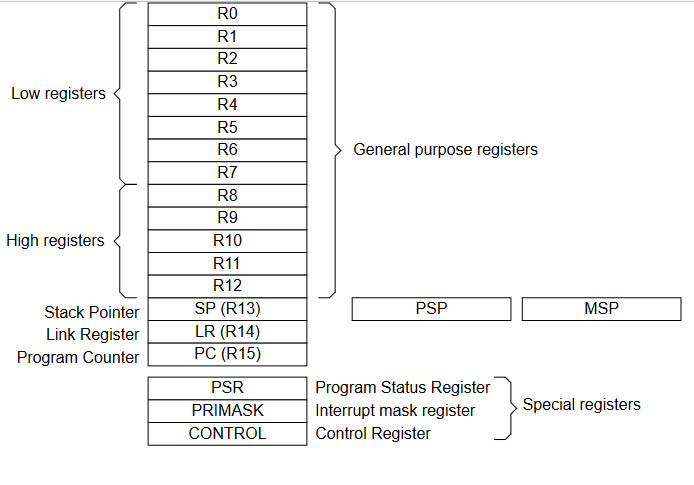Using mode13 isn’t too tricky, it’s just the same a a lot of the other modes.
I decided to call it Mode13 for two reasons, the First, it reminds me of the old MSDOS mode13, which was 320x200 with 256 colours. This screen mode was roughly half of the ‘high resolution’ 640x480 16 colour modes that VGA cards could do at the time. The second reason was that it coincidentally is the 13th graphics mode to be defined in the Pokitto core files.
To use mode13 simple define it in your my_settings.h
#define PROJ_MODE13 1 // mode 13 graphics 110x88x256
Then the following is an example of this mode in use.
#include "Pokitto.h"
unsigned short pal[256]; // assign a 256 entry array to hold the palette
int PntClr(int x, int y){
return game.display.getPixel(x,y);
}
void Dot (int x, int y, int c){
game.display.drawPixel(x,y,c);
}
int RandMinMax(int min, int max){
return rand() % max + min;
}
int Adjust (int xa, int ya, int x, int y, int xb, int yb){
if(PntClr(x, y) != 0) return 0;
int q = abs(xa - xb) + abs(ya - yb);
int v = (PntClr(xa, ya) + PntClr(xb, yb)) / 2 + (RandMinMax(0,q*10)) / 10;
if (v < 1) v = 1;
if (v > 255) v = 255;
Dot(x, y, v);
return 1;
}
void SubDivide (int x1, int y1, int x2, int y2){
if ((x2 - x1 < 2) && (y2 - y1 < 2)) return;
int x = (x1 + x2) / 2;
int y = (y1 + y2) / 2;
Adjust(x1, y1, x, y1, x2, y1);
Adjust(x1, y2, x, y2, x2, y2);
Adjust(x2, y1, x2, y, x2, y2);
Adjust(x1, y1, x1, y, x1, y2);
if(PntClr(x, y) == 0) {
int v = PntClr(x1, y1) + PntClr(x2, y1) + PntClr(x2, y2);
v = v + PntClr(x1, y2) + PntClr(x1, y) + PntClr(x, y1);
v = v + PntClr(x2, y) + PntClr(x, y2);
v = v / 8;
Dot(x, y, v);
}
SubDivide(x1, y1, x, y);
SubDivide(x, y, x2, y2);
SubDivide(x, y1, x2, y);
SubDivide(x1, y, x, y2);
}
void make_plasma(int x1=0,int y1=0,int x2=game.display.width-1,int y2=game.display.height-1){
game.display.clear();
if(x1<0)x1=0;
if(y1<0)y1=0;
if(x2>game.display.width-1)x2=game.display.width-1;
if(y2>game.display.height-1)y2=game.display.height-1;
Dot(x1, y1, RandMinMax(0,255) + 1);
Dot(x2, y1, RandMinMax(0,255) + 1);
Dot(x2, y2, RandMinMax(0,255) + 1);
Dot(x1, y2, RandMinMax(0,255) + 1);
SubDivide(x1, y1, x2, y2);
}
void make_pal(void){
int a,s,r,g,b;
for(a=0; a<=63; a++){
s = 0; r = a; g = 63-a; b = 0; pal[a+s] = game.display.RGBto565(r*4,g*4,b*4);
s = 64; r = 63-a; g = 0; b = a; pal[a+s] = game.display.RGBto565(r*4,g*4,b*4);
s = 128; r = 0; g = 0; b = 63-a; pal[a+s] = game.display.RGBto565(r*4,g*4,b*4);
s = 192; r = 0; g = a; b = 0; pal[a+s] = game.display.RGBto565(r*4,g*4,b*4);
}
game.display.load565Palette(&pal[0]); // load a palette the same way as any other palette in any other screen mode
}
int main(){
game.begin();
game.display.persistence=1;
srand(game.getTime());
make_pal(); // create 256 colour palette for this demo
make_plasma(0,0,game.display.width-1,game.display.height-1); // create a nice plasma cloud
while (game.isRunning()) {
if(game.update()){
// mode 13 has a palette offset, so instead of rotating your palette, you just tell it which colour should be first.
game.display.palOffset = col++;
}
}
return 1;
}
Currently mode 13 is not fully integrated (I accidentally left a couple of things out when I submitted it) but you can download a pokittolib containing mode13 from here - https://github.com/spinalcode/PokittoLib

